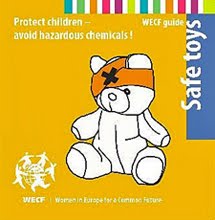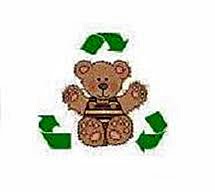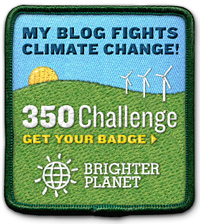
Konsumentverket is warning that the Swedish toy distributor Leksam AB has recalled 3400 softies ”Flingshot - Flying Animals", existing in six different animal-shapes and colours. The reason is that the battery from the toy can easily be taken/fall out which entails a big suffocation risk for the child. The toys have already been distributed to toy shops throughout Sweden and those who already purchased them, Leksam AB is inviting to return and be refunded. One could argue that the battery can be removed and that the child can play with the toy. But is this what parents want their children to play with?
Just to remind all, 85% of toys on the Swedish market are being imported, out of which 75% are "Made in China". With that follows the usual problems: quality-safety and ethics (environmental and social values).
When choosing to buy a product (a toy as well) in stores, it is difficult to find product information related to health, environment and ethics. Swedish consumers wish to choose products based on more than just the price. Shortly what is important to consumers is: health, country of origin, environmental considerations, and ethics.
Information enabling consumers to make their choices is often missing in stores and on products. 70% of the consumers wish to make choices based on ethical considerations, but only 33% actually find such information in stores/on products or their packaging; further, only 50% are content with the information they receive regarding ethical issues.
The situation regarding environmental factors is even worse: only 18% find the information they seek regarding the impact the product has on the environment/health.
When I have been going to toy shops and trying to gather information about the toy production, in majority of the cases, I noticed that there is a lack of:
a) declaration of substances which the toy is containing. One can more easily find what the toy does NOT contain (e.g. BPA free, lead-free…) which for me is cheating. By seeing what the toy is not containing, the client is being "driven" to the conclusion that the toy is safe enough for the child. But what about all other chemicals in the toys which are not mentioned on the toy-tag or on the box packaging?
b) manufacturing/place of origin, is also often missing but can instead easily find, where the toy has been designed. Isn't that missguiding the client again? For example, a toy-tag will say “Designed in Denmark (or Sweden)...” with no mention where the toy was in fact produced. I am confident many people do not pay attention to this detail and wrongly conclude that the toy was produced in Europe.
Moreover, we as consumers-parents, are recommended to look for the CE marking when buying a toy. Well, one should know that this is NOT 100% a guarantee that the toy is fully safe for the child. The CE marking is not a mark of quality is the producers warranty that EU security norms are fulfilled in toy production. The most important one should have in mind is that the CE marking does not mean that the product has been tested before it ends up on the shelve of the shop.
So what shall we as consumers-parents-grand parents, all loving and caring for our little one, have in mind when choosing and buying a toy?
1. Being well informed, I believe is crucial. One can find good and indepth information on Konsumentverket and Kemikalieinspektion websites. Moreover, there are other very good source of information such as the "Toy guide" brochure from Women in Europe for Common Future (WECF) wich provide information in brief how you can choose the most safe toy for you child. Another good site with toy recalls if the Healthy Toys.
2. If you go for an "ordinary" toy (which is not natural and environmental friendly), do not be fulled by the fact that it has been designed in Europe, does not contain CERTAIN chemicals and has the CE marking. This is not enough! Check yourself the toy making sure it is adequate (age related) and safe enough for your child (e.g. no small and/or loose parts, no smell at all, no loud sounds, etc.)
3. If the two above suggestions seem not good enough, I propose you choose a natural toy. For some advice, please consult our "Etiska, ekologiska leksaker" tips in the right column of this blogg.
And last but not least, let's hope that the new EC Toy Directive (which has entered into force on 30 June this year) will provide a better and safer toy and play environment to our children, and that the toy importers will improve their knowledge on toy safety and implement a full toy control when importing toys, particularly for those manufactured outside of Europe.
torsdag 5 november 2009
Leksaker återkallas igen!
Prenumerera på:
Kommentarer till inlägget (Atom)














Inga kommentarer:
Skicka en kommentar